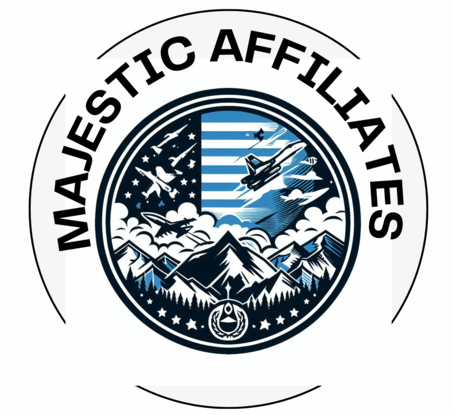Pinterest remains one of the fastest-growing social platforms for driving organic affiliate traffic. Its visual-first, discovery-driven interface offers creators a powerful way to share content, build authority, and monetize their niche. Here’s an in-depth guide to help beginners dive into Pinterest affiliate marketing in 2025.

Why Pinterest? The Ultimate Affiliate Platform
- Search-Engine Behavior
Pinterest functions like a visual search engine—users actively browse for ideas, tutorials, and products. - Longevity of Content
Pins can drive traffic for weeks, months, or even years after posting—unlike fleeting social content. - High Intent Users
People come to Pinterest looking for inspiration—and often click through to shop, learn, or purchase.
Step 1: Set Up Your Pinterest for Affiliate Success
1. Convert to a Business Account
This unlocks analytics, rich pins, and promoted pins (ads) which are great for scaling.
2. Optimize Your Profile
- Choose a clear profile image.
- Use a keyword-rich bio, e.g., “Health, beauty & wellness tips.”
- Include a link to your website or newsletter.
3. Enable Rich Pins
Rich pins display extra info like price, availability, and review ratings—available for product pages.
Step 2: Choose Profitable Affiliate Niches That Convert
Select a niche with visual appeal, audience demand, and affiliate potential. Ongoing consumer interest is key.
Good niches include:
- Beauty & skincare tutorials
- Home décor and DIY projects
- Healthy recipes & kitchen tools
- Travel tips and gear
- Fitness routines and workout gear
- Digital products (printables)
Focus on one or two niches to build a cohesive and targeted board feed.
Step 3: Find High‑Converting Affiliate Programs
Use affiliate networks that integrate well with Pinterest:
- Amazon Associates – vast product variety
- ShareASale, CJ Affiliate, Awin, Impact – host brand-specific programs
- Digistore24, Gumroad – for digital products, courses, and printables
- ShopStyle Collective – ideal for fashion and beauty influencers
Remember to choose programs that allow affiliate links on Pinterest—Amazon allows link redirects while some retailers require linking through your website.
Step 4: Create Pinterest‑Ready Affiliate Content
1. Design Eye‑Catching Pins
- Ideal dimensions: 1000×1500 px (2:3 ratio)
- Use bold, readable fonts
- Include lifestyle images and product visuals
- Add a compelling overlay text (e.g., “Top 5 Skin Care Picks 2025”)
2. Write Strong Descriptions
- Use 1–2 long-tail keywords
- Include affiliate link (or HTML link if allowed)
- Add a CTA: “Click to shop”, “Learn more”, etc.
- Comply with disclosure rules like “#ad” or “affiliate link”
3. Organize Boards Strategically
Create niche-specific boards with clear titles:
- “Minimalist Decor Ideas”
- “Treadmill Workout Gear”
- “Healthy Breakfast Recipes”
Step 5: SEO — Make Your Pins Discoverable
Think like a search engine:
- Use keyword research tools (Keyword Tool, Tailwind)
- Include keywords in pin title, description, and board name
- Use 2–5 relevant hashtags
- Add descriptive alt text (for accessibility & SEO)
Step 6: Consistency + Scheduling = Growth
- Aim to pin 3–10 times daily
- Use Tailwind to schedule pins efficiently
- Repurpose successful pins with different creatives and descriptions
- Pace your affiliate links—mix in tutorials, gift guides, and informational content
Step 7: Track Performance & Optimize
Use Pinterest Analytics to measure:
- Impressions – how often pins appear
- Saves – engagement signal for trending pins
- Clicks – direct link performance
Identify:
- Top-performing content and replicate it
- Boards that need fresh content
- Adjust strategies based on seasonal trends (e.g., gift guides around holidays)
Step 8: Scale Further with Promoted Pins
Once organic content is working:
- Allocate budget to Promoted Pins
- Target audiences by interests or keywords
- Promote high-converting product pins to boost affiliates
Start small (e.g., $5/day) and scale based on ROI.
Step 9: Drive Traffic to Your Blog or YouTube (Optional Strategy)
While Pinterest can direct-click to affiliate links, a blog or YouTube channel allows:
- In-depth reviews and tutorials
- Higher trust building
- Expanded monetization through display ads and additional affiliate links
Create content like “My Favorite Kitchen Tools 2025”, embed affiliate links, and promote the post via Pinterest.
Best Practices & Compliance
- Always disclose affiliate links clearly (#ad, affiliate link)
- Use custom URL shorteners like Bitly for readability
- Follow program rules, including no follow/noindex tags where required
- Stay on brand—your visuals and tone should match your niche identity
- Avoid spam—repeatedly pinning same link to many boards can lead to penalties
FAQs
Is Pinterest Affiliate Marketing Still Effective in 2025?
Absolutely—its visual, search-driven interface still drives consistent, high-converting traffic.
Do I Need a Website?
No—but a blog or landing page can boost credibility and SEO. For full affiliate control, a website is recommended.
How Soon Will I See Results?
You can start seeing clicks within days—but growth is cumulative. High-traffic pins often take 2–3 months to mature.
Final Thoughts
Pinterest offers a powerful blend of evergreen traffic, visual discovery, and shopping intent—ideal for affiliate marketers. By niching down, creating optimized pins, and tracking results, you can build a sustainable income without a ton of upfront investment.
Start small, stay consistent, and scale smartly.
**Get started today! Share your niche below and I’ll suggest creative strategies tailored to your topic**
